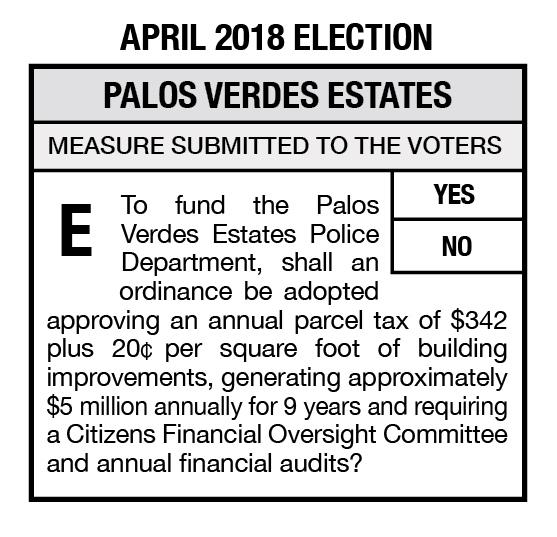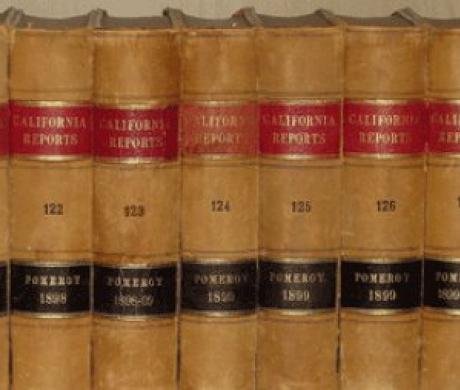Tips for Achieving Ballot Measure Success
Anton Dahlerbruch is former city manager of Palos Verdes Estates and an executive recruiter for Peckham & McKenney; he can be reached at Tony@peckhamandmckenney.com. Jennifer King, former council member for Palos Verdes Estates and a past president of the League’s Los Angeles County Division, also contributed to this article.
Many cities face perennial challenges related to a shortage of money for maintaining and improving public services or infrastructure. In the quest for funding, cities often ask voters to approve a tax or debt. A successful revenue ballot measure should not be taken for granted; there are many tried and true steps and helpful lessons learned for cities that are considering placing a measure on the ballot in an upcoming election.
Palos Verdes Estates (pop.13,544) is a suburban California community of five square miles. The city is fully developed with approximately 5,000 residential properties and two small commercial plazas that serve as community centers.
Due to deed restrictions controlling development and land use, Palos Verdes Estates receives no measurable sales tax or business license tax and has no hotels to generate transient occupancy tax. Property tax provides the city’s primary revenue source.
On the expense side, the city’s Police Department is its highest cost center. Minimally staffed with 23 sworn positions and an equal number of nonsworn personnel, the department’s annual operational cost is approximately $7 million. The fire and paramedic services contract runs a close second at approximately $5 million annually. Palos Verdes Estates’ total operating annual budget is approximately $18 million.
In the wake of Proposition 13 (1978) limits on property taxes, Palos Verdes Estates faced a structural deficit for maintaining services. In response, the city first cut the Fire Department and contracted with Los Angeles County for fire services. To cover the shortfall, voters approved a parcel tax in 1985.
The original parcel tax included a sunset clause, and the assessment expired in 1990. In the following years leading up to July 2017, voters approved renewing the tax in 10-year increments. The tax was also tied to paying the fire services contract. Repeatedly, 87 percent of voters approved the tax.
In early 2015, the city council began planning for the 2017 parcel tax renewal. The council reviewed a proposal from a communications consultant and information research consultant to provide services in support of putting the measure before the voters — at a cost of approximately $100,000 a year. Alternatives included consolidating the election in November 2016 at an unbudgeted cost of $60,000 or placing the measure on the regularly scheduled (and budgeted) municipal election in March 2017.
Mindful of costs, the council sought input from residents and decided to forgo the consultants and hold the election in March 2017. In preparation for the ballot measure, the city manager established a blue ribbon committee of residents to analyze city finances and make recommendations on ways to generate revenue and alleviate the city’s structural deficit, and city staff developed information to help the community understand Palos Verdes Estates’ fiscal needs.
In March 2017, the ballot measure failed to pass. Its story offers lessons for cities.
Evolution of a Failed Ballot Measure Effort
The blue ribbon committee convened on several occasions. Because the city manager formed the committee, it was not subject to open meeting requirements and the city did not issue meeting notices. Ultimately, the committee presented its conclusions to the council along with public input and modifications, and the city placed Measure D on the ballot.
The council added a sunset clause that was not in the original committee recommendation. The city produced a website with substantial information for the public. Nothing was printed or mailed to avoid the appearance of advocacy. Residents, the Police Officers’ Association and others engaged in the campaign using social media, signs, mailers, websites and meetings. Measure D garnered only 60 percent of the vote — and failed. Palos Verdes Estates immediately lost 25 percent of its revenue.
The city manager developed a strategic plan to address the shortfall. The council took ownership of the response and incrementally implemented action steps.
In developing the strategic plan, the city manager focused on:
- Maintaining operations with the loss in revenue;
- Cash flow;
- Employee morale and departures that could have negative consequences;
- Public engagement activities and communications with the community; and
- Actionable steps for the council.
The council subsequently assigned itself to an ad hoc committee to:
- Reduce costs of the Police Department and other departments;
- Evaluate the overall city budget for across-the-board reductions;
- Develop a new ballot measure; and
- Update the Schedule of Fees and Charges.
In addition, the council initiated a public engagement strategy through the Davenport Institute and authorized website platforms for online financial transparency and public access to records.
The ad hoc committee engaged consultants to comprehensively evaluate the failed ballot measure and the Police Department and nonsafety departments’ budgets and conduct a user fee study. The results included approximately $1.3 million in budget reductions, fee increases, a Citizens’ Financial Oversight Committee, public engagement meetings — and a new ballot measure that asked voters to fund the local Police Department.
In the April 2018 election, 59 percent of Palos Verdes Estates voters turned out and passed Measure E with 69 percent of the vote.
Lessons Learned
The following tips derive from Palos Verdes Estates’ experience.
Keep it simple. Have an easy-to-understand, concise ballot measure. It should be based on a concrete outcome and framed that way. Measure D included a formula with multiple decimal points, and under its provisions fire and paramedic services could not be eliminated. Measure E presented rounded figures and a contract with the Sheriff’s Department as an alternative.
Do not underestimate the impact of communications on the outcome. Develop key messages on the relevant topics and use them continually. A broad residents’ coalition supported Measure E and coordinated strategic outreach to the community. The coordinated effort systematically educated the public with important facts about the measure.
Engage and trust the expertise of professionals. The election and campaign process is complicated and difficult. Retaining consultants for research and communications efforts can provide important assets at a low cost relative to the revenue generated by a successful measure.
Be prepared. Developing a successful ballot measure takes time and should include comprehensive analysis, reports and projections, validated facts and an inclusive process that engages the public. Keep in mind that every action of the city council and staff and every council vote may affect residents’ support of or opposition to the campaign. Anticipate the issues that could arise. Measure D was on the ballot concurrent with city council candidates. Measure E was an off-cycle election with a singular management and budget focus on funding local police services.
Focus the city’s business in a manner that provides for public participation. Public engagement gives the community the opportunity to engage in the council’s decisionmaking process. Effective public engagement builds and sustains the public’s trust in government as it ensures residents’ input is heard and considered. A city and organizational culture that embraces public engagement enhances the success of ballot measures and other council decisions. Measure E’s success resulted, in part, from multiple activities and decisions involving the public.
What Followed
Although the city’s budget is now restored to its historical level, the City of Palos Verdes Estates faces several challenges resulting from decisions made in 2015. The ballot measures and elections meant that projects and initiatives were placed on hold while Measure D was debated, failed to pass and was replaced with Measure E in the subsequent election. Staff was stretched and challenged to maintain services with reduced funding. Long-term fiscal analysis and priorities were delayed while the elections focused on current issues. Public and employee confidence in the city diminished significantly.
Now in recovery mode, Palos Verdes Estates is developing a long-term fiscal plan and building its resiliency to future financial shortfalls. The silver lining is a successful ballot measure, firm financial footing, a public process that provides a foundation for moving forward and lessons for future ballot measures.
Annual Conference Session Addresses This Topic in More Detail
The “Ballot Measure Training Academy” session at the League of California Cities 2019 Annual Conference & Expo will cover the essentials of building a campaign operation, organizing grassroots support, developing ballot materials and crafting a winning message. The session will be held Thursday, Oct. 17, from 4:15–5:30 p.m. For location details, see the conference brochure or the League’s mobile app.
Related Resources
Ballot Measure Activities and Use of Public Resources: What You Need to Know
Get Your Public Meetings Back on Track
Meeting Great Expectations: Dealing With Emotional Audiences
Promoting Good Governance Within Your Agency
This article appears in the October 2019 issue of Western City
Did you like what you read here? Subscribe to Western City






